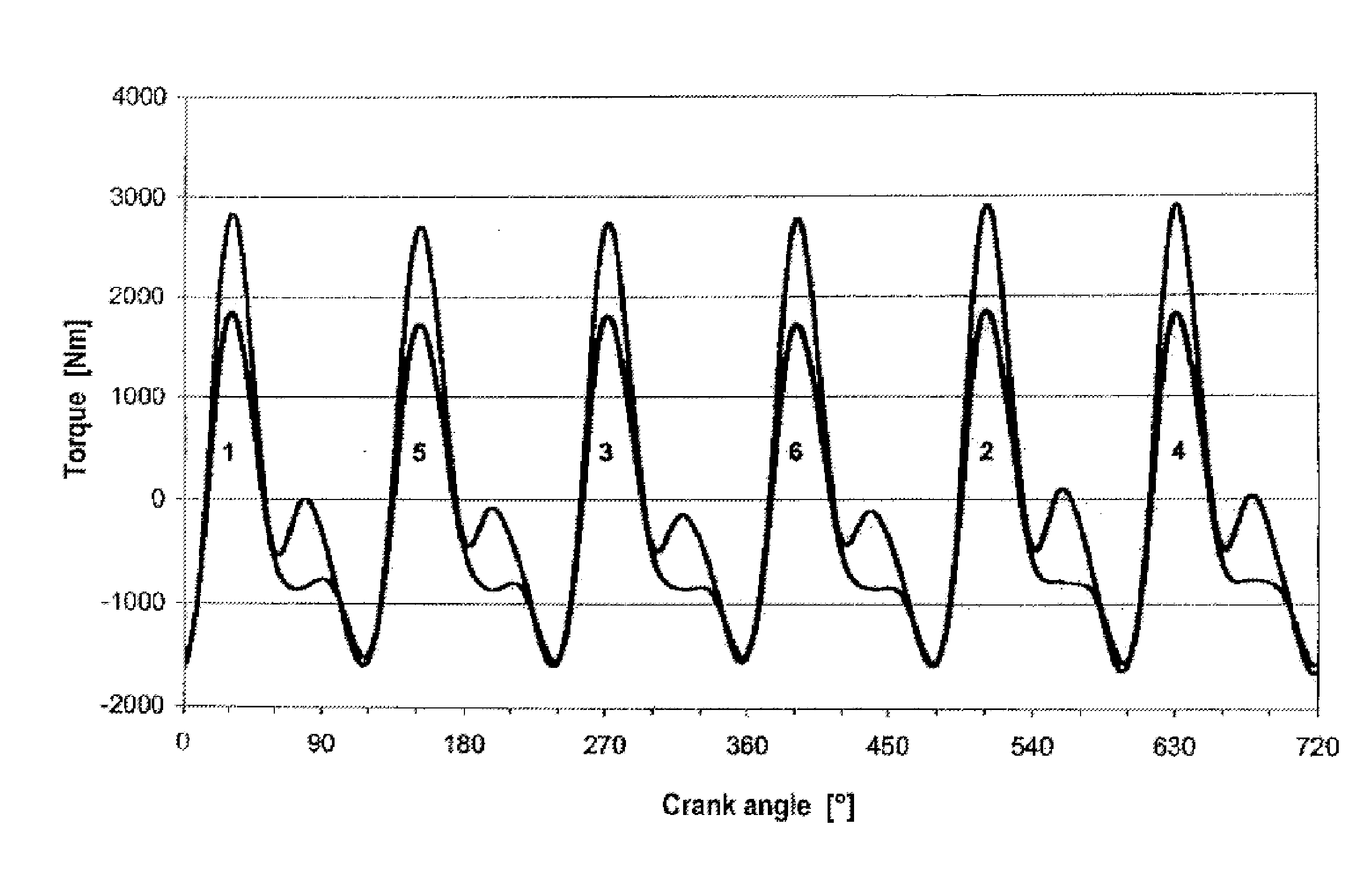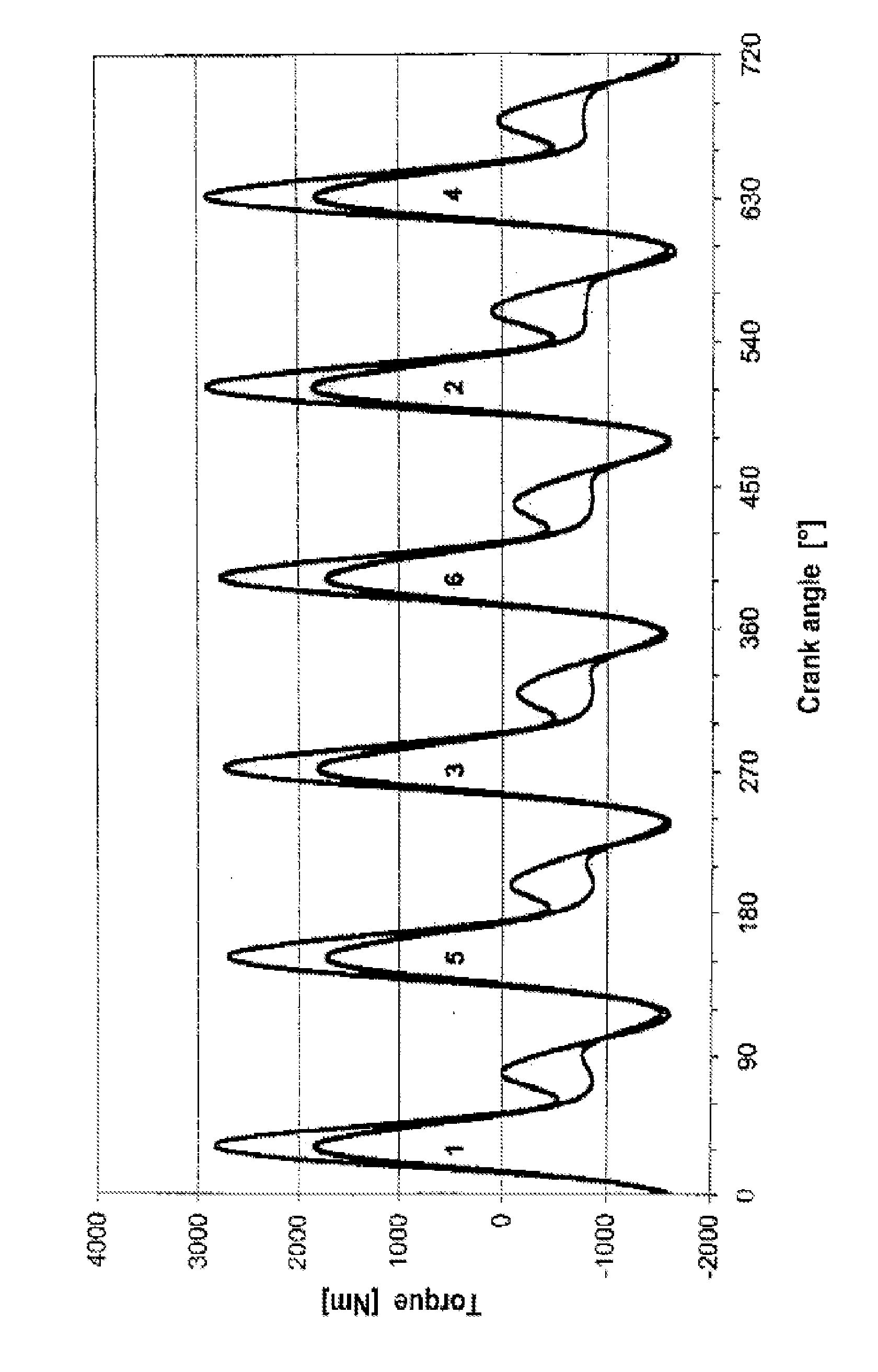Method for determining the power of an internal combustion engine
- Summary
- Abstract
- Description
- Claims
- Application Information
AI Technical Summary
Benefits of technology
Problems solved by technology
Method used
Image
Examples
Embodiment Construction
[0020]The invention will be explained in conjunction with the determination of the power of an internal combustion engine designed as a six-cylinder diesel engine. The invention is however also suitable for any other types of internal combustion engine.
[0021]The power of the diesel engine is not determined directly on a power-test stand but rather, according to the invention, is determined indirectly by virtue of the power of the tested diesel engine being predicted. The indirect determination or prediction of the power of the internal combustion engine takes place, according to the invention, in conjunction with a cold test of the diesel engine.
[0022]The cold test of the diesel engine takes place on a cold-test stand. On said cold-test stand, the diesel engine is firstly tested in the dragged, unfired state without fuel injection. For this purpose, the diesel engine is for example driven in a dragging manner via the flywheel by an electric motor belonging to the cold-test stand. He...
PUM
 Login to View More
Login to View More Abstract
Description
Claims
Application Information
 Login to View More
Login to View More - R&D
- Intellectual Property
- Life Sciences
- Materials
- Tech Scout
- Unparalleled Data Quality
- Higher Quality Content
- 60% Fewer Hallucinations
Browse by: Latest US Patents, China's latest patents, Technical Efficacy Thesaurus, Application Domain, Technology Topic, Popular Technical Reports.
© 2025 PatSnap. All rights reserved.Legal|Privacy policy|Modern Slavery Act Transparency Statement|Sitemap|About US| Contact US: help@patsnap.com


